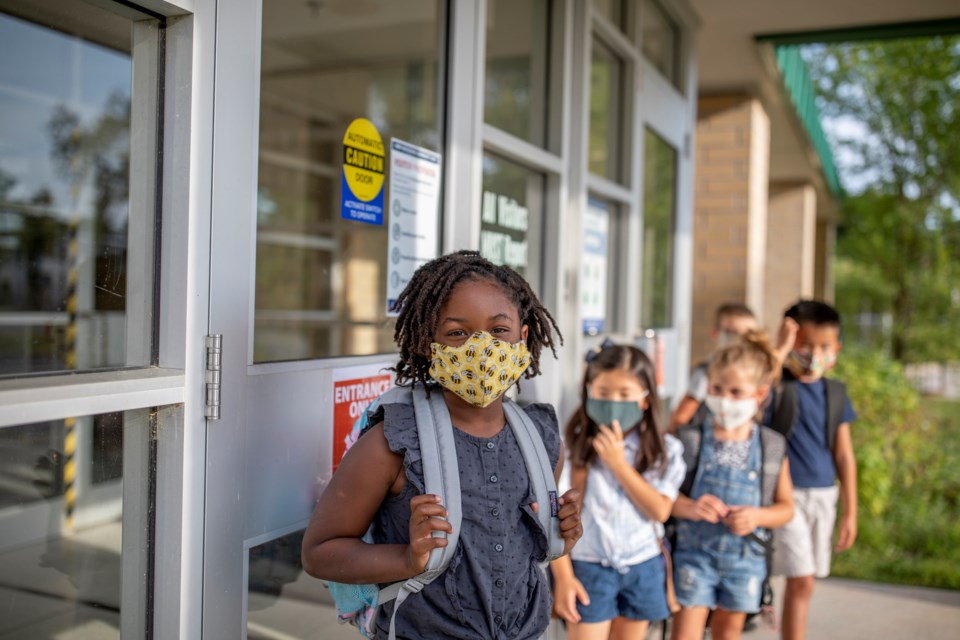The last two years have been far from normal for children and families. As households prepare for back-to-school, there can be some apprehension of what the year will bring.
Our research has shown that children, teens and parents have struggled with regards to mental health during the pandemic, where higher levels of pandemic-related stress corresponded to more mental health difficulties in families.
Although there are many aspects of the COVID-19 pandemic that are not in our control, it is important to focus on the things that are. Research shows that negative mental health outcomes in the face of stress are not inevitable based on external factors alone. There are important strategies families can use to help promote mental health.
Family routines can provide stability during times of stress and are generally important for children’s mental health and have shown to be protective for children’s mental health during the COVID-19 pandemic.
As child psychologists and researchers, we review the scientific evidence for strategies that are associated with positive child and family mental health. These are the strategies that we universally recommend and share with the children, teens, and families we work with in our clinical practice to inoculate against stress and family challenges.
1. Social and emotional connections
Humans are social beings and over the last two years we have experienced limitations and restrictions on our ability to maintain and develop social connections.
Research during the pandemic showed that youth who felt socially connected were protected against poor mental health. Therefore, creating opportunities for children and youth to feel connected within their families and with their peers are critical for promoting well-being.
For children and teens, family social and emotional connections are equally, if not more important as friendships in helping children protect their mental health. During the pandemic, teens who felt stress at home had more mental health problems.
At home, fostering social connection and understanding can be achieved through spending time together engaging in mutually enjoyable activities. Ensuring that there is time to listen to your child talk about their day, process events and emotions from school, and engage in supportive problem solving is critical.
When listening to your child or teen talk about their day, it is important to listen and understand first before engaging in any problem solving. Often children can feel better after discussing their emotions without needing to problem solve.
Natural opportunities for these connection times include during mealtime, car rides or commutes, and before bed. There are resources that provide suggestions for initiating supportive conversations with your kids.
2. Coaching to cope with big and small worries
Worrying can be a natural response to uncertainty, which has become more prevalent during the COVID-19 pandemic. One habit that can help mitigate children’s worries from developing further is teaching them to cope with big and small worries as they come.
Talking about, labelling and validating worries is an important first step. Next, help them think through how they might respond if their worry came true, how likely their worry is to occur, and evidence that disproves their worry.
Modelling how you identify, address and cope with your own worries can serve as an important example for your child. In fact, our research demonstrates that coping ability predicted better mental health for parents throughout the pandemic, as well. There are many resources and free apps available for helping your child to cope with worries and anxiety.
3. Schedule time for physical activity each day
Physical activity is an important determinant of mental health and well-being for both children and adults. During the COVID-19 pandemic, there has been a 20 per cent decrease in children’s physical activity levels, particularly among individuals living in countries with colder climates.
We recommend starting with a small goal to start, such as going for a walk after dinner. Being successful in a small goal helps to increase motivation going forward. Making changes to how you travel to school or extra-curricular activities (for example, walking or riding a bike) can also be an easy way to increase activity.
As the weather gets colder, consider changing to indoor swim and recreational activities. Year-round outdoor activities also provide an opportunity for safe physical activity and social engagement despite evolving risks with the COVID-19 pandemic.
4. Protect good quality sleep for children and family members
Sleep is fundamental to mental health and well-being. Nearly half of parents reported their child’s sleep worsened during the COVID-19 pandemic in part due to reduced physical activity, increased screen time and heightened anxiety.
Guidelines recommend that children get eight to 11 hours of sleep per night, and adults get at least seven hours. It can be helpful to work back from the time your child needs to wake up and work towards an appropriate bedtime. This can often mean starting a bedtime routine and getting ready for bed before we think we need to.
Having a good sleep hygiene regime can help anyone who has trouble getting to sleep. This can include avoiding caffeine late in the day, avoiding screens an hour before bed and having the same routine every night (for example, shower, pajamas, brush teeth, read a story or book, bed).
For families seeking more information, Children’s Mental Health Ontario has put together a Back to School Mental Health Backpack to help children and families with the challenges of returning to school.
![]()
Nicole Racine receives funding from SSHRC and CIHR.
Dillon Thomas Browne receives funding from SSHRC and the Ministry of Economic Development, Job Creation & Trade.
Stephanie G. Craig receives funding from SSHRC.



